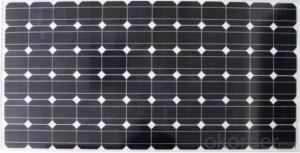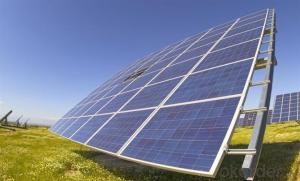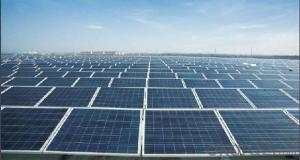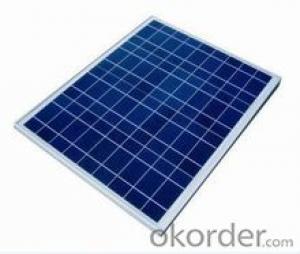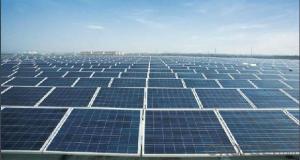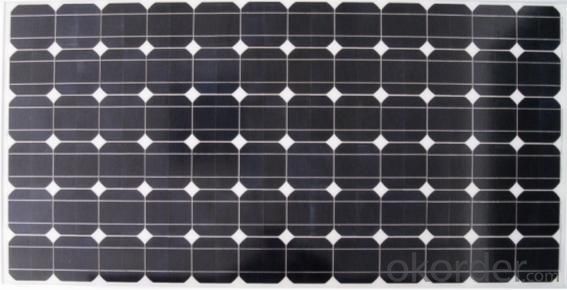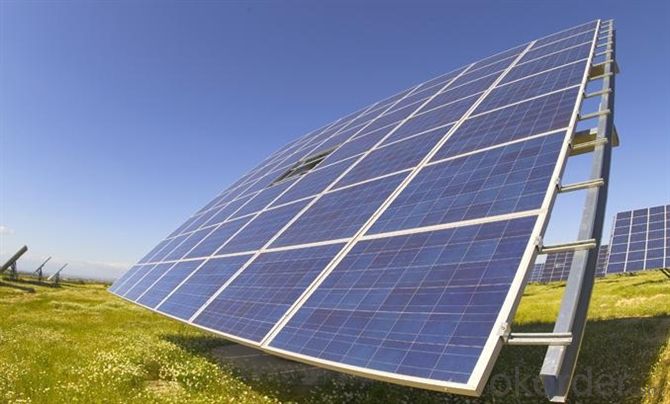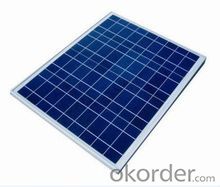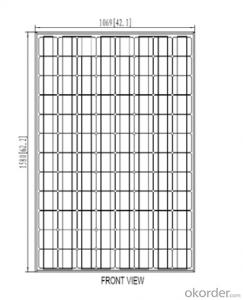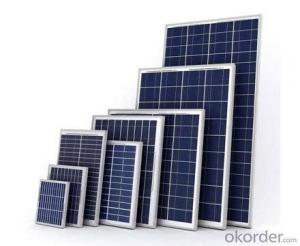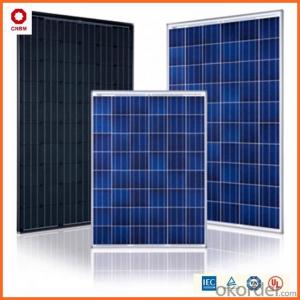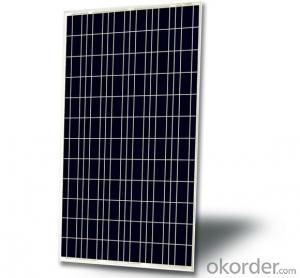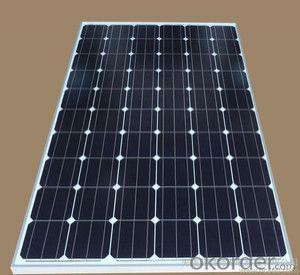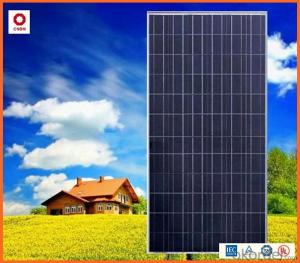Solar Monocrytalline Series IV (240W-260W) - Homeowners Insurance Compatible
- Loading Port:
- Shanghai
- Payment Terms:
- TT OR LC
- Min Order Qty:
- 1000 watt
- Supply Capability:
- 20000000 watt/month
OKorder Service Pledge
OKorder Financial Service
You Might Also Like
Specification
1.Structure of Solar Module Description
The photoelectric conversion efficiency of monocrystalline silicon solar panels is approximately 15%, the highest of 24%, this is all kinds of solar panels in the photoelectric conversion efficiency is highest, but the production cost is very big, so that it can't be extensive and widespread use. Due to the commonly used single crystal silicon and waterproof resin toughened glass encapsulation, so its durable, generally can amount to 15 years, the service life of up to 25 years.
2.Characteristics of the Solar Module
| Max Power Voltage Vmp (V) | 50.0 | 50.5 | 51.0 | 51.5 | 52.0 |
| Max Power Current Imp (A) | 4.80 | 4.85 | 4.90 | 4.96 | 5.01 |
| Open Circuit Voltage Voc (V) | 60.4 | 61.1 | 61.7 | 62.3 | 62.9 |
| Short Circuit Current Isc (A) | 5.30 | 5.35 | 5.40 | 5.45 | 5.50 |
| Max Power Pm(W) | 240 | 245 | 250 | 255 | 260 |
3.Limits of the Solar Module
Operating Temperature ﹣40℃to+85℃
Storage Temperature ﹣40℃to+85℃
Max System Voltage 1000VDC(IEC)/600VDC(UL)
4.Specifications of the Solar Module
Material | the Solar Module |
Cell | Monocrytalline Cell 125×125 mm |
Packing | 616 Pcs/40ft (H) Container |
| Weight | 20.5kg |
| Tolerance | 0~+5W |
Certificate | TUV VDE UL |
5.Applications of the Solar Module
1.Electricity
2.Heat energy
6.IMages of the Solar Module


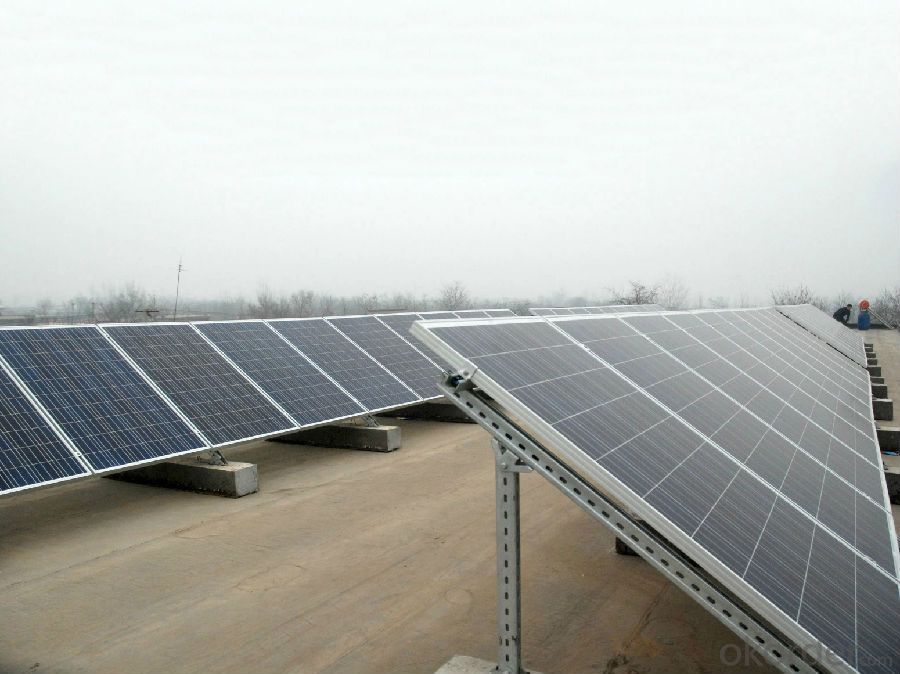
FAQ
1. Q: Do you have your own factory?
A: Yes, we have. Our factory located in Jiangyin city, jiangsu province.
2. Q: How can I visit your factory?
A: Before you take off from your country, please let us know. We will show you the way,or arrange time to pick you up if possible.
3. Q: Do you provide free sample?
A: Usually we do not offer free sample
4. Q: Could you print our company LOGO on the nameplate and package?
A: Yes, we can do that.
- Q: I'm a carpenter, and can do electric work. I want to make some money installing Solar Panels. what's the best source?
- Guide okorder /
- Q: Can solar panels be installed on agricultural land?
- Yes, solar panels can be installed on agricultural land. In fact, it is a common practice to utilize agricultural land for solar energy projects. This dual use of land allows farmers to generate additional income from leasing their land for solar panel installations while continuing their agricultural activities. Moreover, solar panels can provide shade to crops, reduce water evaporation, and improve overall farm sustainability.
- Q: I'm looking to mount a solar panel to the top of my 2003 Pontiac Montana and was wondering how i could do it without any screws? Magnets maybe?
- Build okorder /
- Q: i hav e a project for school we need to calculate cost to buy and install solar panels in our school
- It operates itself, except if there is a problem. It costs a lot to buy and setup. Some solar panels move to track the sun- the tracking equipment is complicated and needs maintenance. Some solar power systems have banks of batteries to store the energy- those wear out eventually. Some solar panels feed into the power grid, and there is a cost associated with managing that power- paid by the power company.
- Q: Can solar panels be installed on commercial buildings?
- Yes, solar panels can be installed on commercial buildings. In fact, many businesses and organizations are increasingly opting for solar panel installations to generate clean and renewable energy, reduce energy costs, and demonstrate their commitment to sustainability.
- Q: im interested in starting a solar panel manufacturing company. ive researched on how to make them and it doesnt look too hard, and is definitely something i can figure out. i would be starting from nothing so my question is what are the chances of me actually selling a lot of panels and the business actually succeding?thanks
- At this very moment, most of the people already have an idea on how to create their own solar panels, And creating your own company takes a lot of necessities such as permits ans other stuffs like that,.
- Q: I'm going to this camp and the instructors asked us to be prepared tomorrow to build a sun tracker for a solar panel. Does any one have any ideas, tips, or advice?
- Since the sun moves in the sky on a very predicatable course you don't need a closed loop control system to track it. All you need is a clock-drive motor and the proper gearing for your latitude. The clock drive motor will move at a constant rotational velocity based on time, and when it is geared down properly the angle of the shaft will follow the sun. Make sure the clock motor is powerful enough to move the solar panel, etc. That's a start, anyway. .
- Q: Looking to install solar panels in my house.
- Wholesale prices for BP solar panels range between $335 for the 40 watts panel to $835 for the 70 watts panel. Here's a brief listing of wholesale prices for BP solar models: - BP340J solar panel (40 watts) @ $335 - BP350J solar panel (50 watts) @ $37 - BP375J solar panel (80 watts) @ $504 Right now I'm getting a series of 50 watt (7.5 volts) panels installed in my house. It's a start to reduce dependence on electricity bills and try get some tax rebates as well.
- Q: Can solar panels be used for powering a hospital or healthcare facility?
- Yes, solar panels can be used to power a hospital or healthcare facility. Solar energy can be harnessed and converted into electricity to meet the energy needs of these facilities. By installing solar panels, hospitals can reduce their reliance on traditional grid electricity, lower energy costs, and contribute to a more sustainable and environmentally friendly healthcare system. Additionally, solar panels can provide a reliable source of power, especially in areas with inconsistent or unreliable electricity supply.
- Q: Do solar panels increase property value?
- Yes, solar panels have been found to increase property value. Studies have shown that homes with solar panels tend to sell at a higher price and faster than those without. Additionally, the potential for reduced energy bills and the positive environmental impact of solar energy can make a property more attractive to potential buyers, thus increasing its overall value.
Send your message to us
Solar Monocrytalline Series IV (240W-260W) - Homeowners Insurance Compatible
- Loading Port:
- Shanghai
- Payment Terms:
- TT OR LC
- Min Order Qty:
- 1000 watt
- Supply Capability:
- 20000000 watt/month
OKorder Service Pledge
OKorder Financial Service
Similar products
Hot products
Hot Searches
Related keywords
